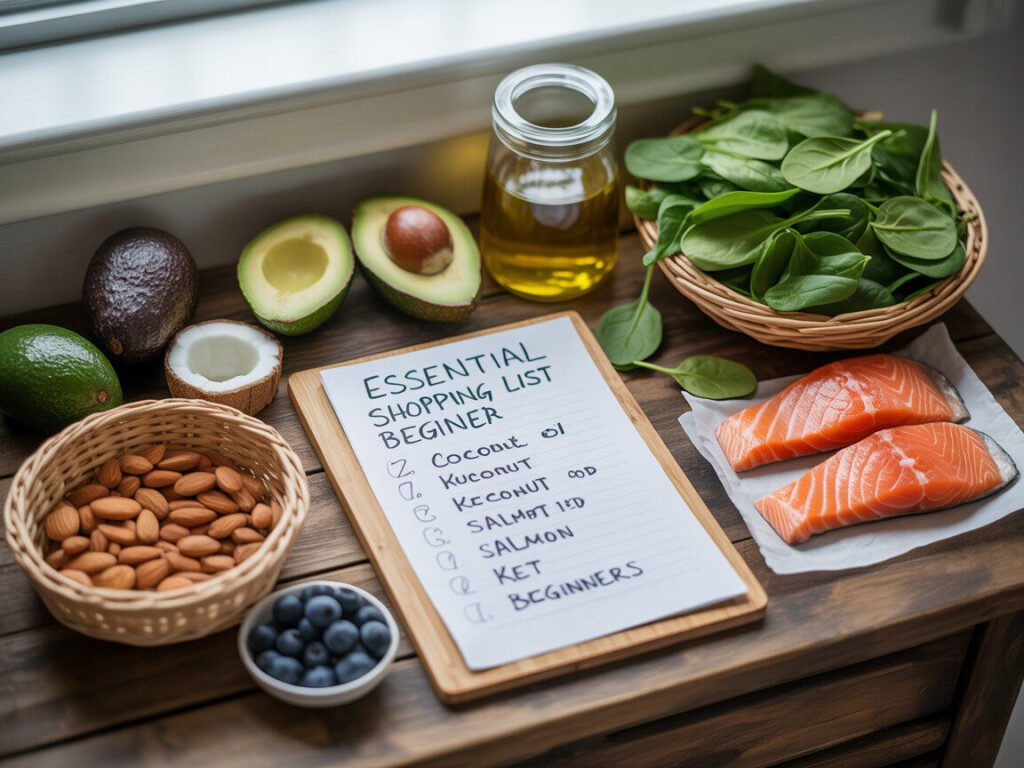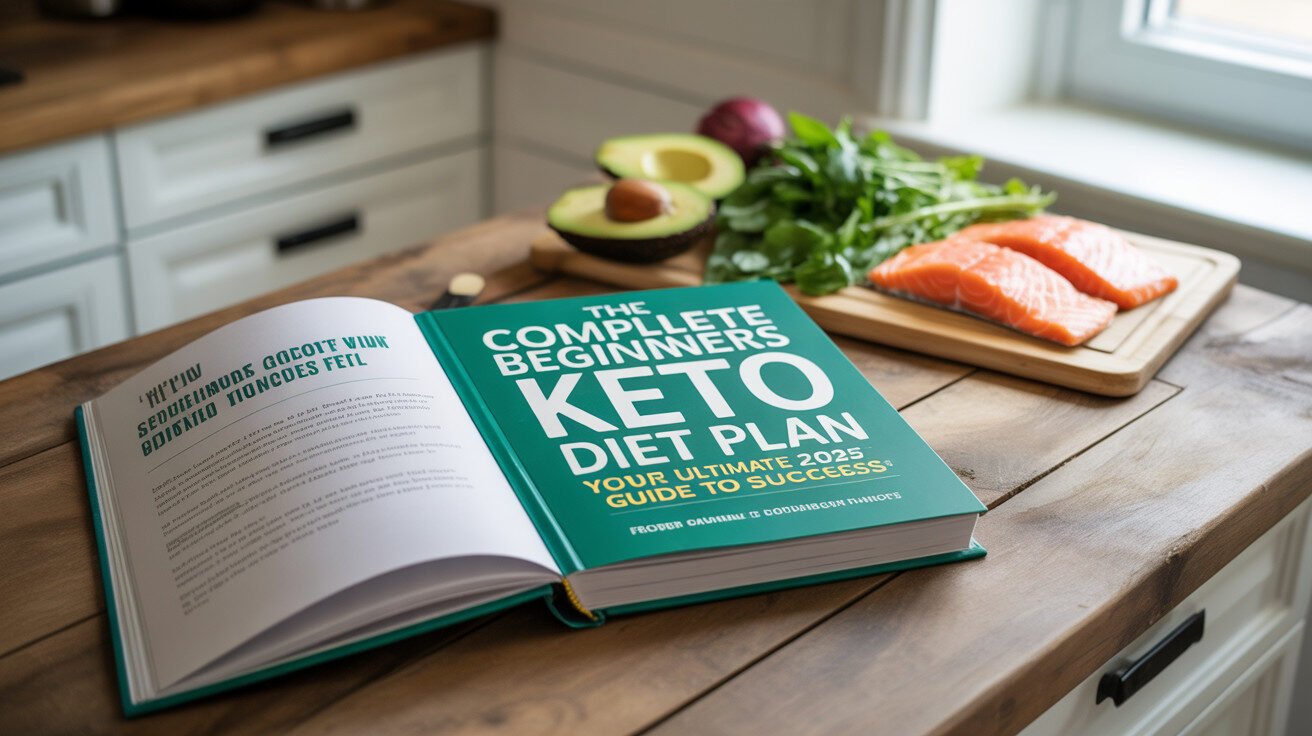Starting a ketogenic diet can feel overwhelming when you’re bombarded with conflicting information about macros, meal plans, and what foods to eat. But here’s the truth: with the right beginners keto diet plan, you can transform your health, lose weight, and feel more energetic than you have in years. This comprehensive guide cuts through the confusion and gives you everything you need to succeed on your ketogenic journey.
What Is the Ketogenic Diet and Why Does It Work?
The ketogenic diet is a high-fat, moderate-protein, very low-carbohydrate eating plan that fundamentally changes how your body produces energy. Instead of relying on glucose from carbohydrates, your body enters a metabolic state called ketosis, where it burns fat for fuel and produces ketones as an alternative energy source.
When you drastically reduce carbohydrates to 20-50 grams per day, your liver begins converting stored and dietary fat into ketones. Research published in Nutrients journal shows that this metabolic shift offers numerous health benefits beyond weight loss, including improved blood sugar control, enhanced cognitive function, and better cardiovascular health markers.
The science is compelling: studies demonstrate that ketogenic diets can lead to significant reductions in blood sugar and insulin levels, making it particularly effective for people with type 2 diabetes or metabolic syndrome. Additionally, the appetite-suppressing effects of ketosis help many people naturally eat fewer calories without feeling deprived.
Essential Macro Ratios for Keto Success
Understanding your macronutrient ratios is crucial for entering and maintaining ketosis. The standard ketogenic diet follows these proven ratios:
Standard Keto Macros:
- 70% fat
- 20% protein
- 10% carbohydrates
High-Protein Keto Variation:
- 60% fat
- 35% protein
- 5% carbohydrates
For most beginners, the standard approach works best. This typically translates to consuming 20-25 grams of net carbs daily, 75-100 grams of protein (depending on your body weight and activity level), and filling the remainder of your calories with healthy fats.
Don’t get too caught up in perfect macro tracking initially. Focus first on eliminating high-carb foods and incorporating more healthy fats. You can fine-tune your ratios as you become more comfortable with the lifestyle.
Your Complete Keto Food List: What to Eat and Avoid

Keto-Friendly Foods to Embrace
Proteins:
- Fatty fish like salmon, mackerel, and sardines
- Grass-fed beef, pork, and lamb
- Free-range chicken and turkey
- Eggs from pasture-raised hens
- Full-fat dairy products
Healthy Fats:
- Avocados and avocado oil
- Olive oil (extra virgin)
- Coconut oil and MCT oil
- Nuts and seeds (almonds, walnuts, chia seeds)
- Grass-fed butter and ghee
Low-Carb Vegetables:
- Leafy greens (spinach, kale, arugula)
- Cruciferous vegetables (broccoli, cauliflower, Brussels sprouts)
- Zucchini, cucumber, and bell peppers
- Asparagus and green beans
Foods to Avoid on Keto
High-Carb Foods:
- Grains (wheat, rice, oats, quinoa)
- Legumes (beans, lentils, chickpeas)
- Most fruits (except small portions of berries)
- Starchy vegetables (potatoes, corn, carrots)
Processed and Sugary Foods:
- Refined sugar and artificial sweeteners (except keto-approved ones)
- Processed snack foods and baked goods
- Sugary beverages and fruit juices
- Most condiments with added sugars
When you’re meal planning, check out these keto cheese crisps for a satisfying snack that fits perfectly into your daily macros.
7-Day Beginner Keto Meal Plan

Having a structured meal plan eliminates guesswork and sets you up for success. Here’s a simple 7-day plan to get you started:
Week 1 Sample Menu
Day 1:
- Breakfast: Scrambled eggs cooked in butter with spinach and cheese
- Lunch: Grilled chicken salad with avocado and olive oil dressing
- Dinner: Baked salmon with roasted broccoli
- Snack: Keto zucchini chips
Day 2:
- Breakfast: Keto coconut flour pancakes with sugar-free syrup
- Lunch: Tuna salad lettuce wraps
- Dinner: Grass-fed beef with cauliflower mash
- Snack: Mixed nuts and cheese
Day 3:
- Breakfast: Keto smoothie with avocado, coconut milk, and protein powder
- Lunch: Caesar salad with grilled chicken (no croutons)
- Dinner: Pork chops with green beans sautéed in garlic
- Snack: Homemade keto beef jerky
Continue this pattern, focusing on whole foods and varying your protein sources throughout the week. Meal prep strategies can save you time and ensure you always have keto-friendly options available.
Managing the Keto Flu: What to Expect and How to Cope
Most beginners experience some side effects during their first week on keto, commonly called the “keto flu.” Research shows that symptoms typically include fatigue, headaches, brain fog, nausea, and irritability.
These symptoms occur because your body is adapting to using fat instead of carbohydrates for energy. The good news? They’re temporary and usually resolve within 3-7 days.
How to Minimize Keto Flu Symptoms:
- Stay hydrated: Drink plenty of water throughout the day
- Increase electrolytes: Add sea salt to your food and consider magnesium and potassium supplements
- Get adequate sleep: Aim for 7-9 hours of quality sleep nightly
- Start gradually: Some people benefit from reducing carbs slowly over a few days rather than going “cold turkey”
- Be patient: Remember that this is a temporary adaptation phase
Lazy Keto vs. Strict Keto: Which Approach Is Right for You?
As a beginner, you might wonder whether to track every macro or take a more relaxed approach. Here’s the difference:
Strict Keto:
- Track all macronutrients precisely
- Use food scales and measuring tools
- Monitor ketone levels regularly
- Better for faster results and medical applications
Lazy Keto:
- Focus primarily on keeping carbs under 20-25g daily
- Don’t track calories, fat, or protein strictly
- Easier to maintain long-term
- Good for beginners who find tracking overwhelming
Most beginners benefit from starting with lazy keto and transitioning to stricter tracking if weight loss stalls or if you have specific health goals.
Essential Shopping List for Keto Beginners

Planning your grocery trips makes sticking to keto much easier. Research from Diet Doctor shows that having the right foods readily available is crucial for long-term success.
Your Keto Shopping Essentials:
Proteins:
- Salmon fillets and canned fish
- Chicken thighs (higher fat than breasts)
- Ground beef (80/20 or 85/15)
- Eggs
- Full-fat Greek yogurt
Fats and Oils:
- Extra virgin olive oil
- Coconut oil
- Avocados
- Nuts and nut butters (unsweetened)
- Seeds (chia, flax, hemp)
Low-Carb Vegetables:
- Spinach and mixed greens
- Broccoli and cauliflower
- Zucchini and cucumber
- Bell peppers
- Mushrooms
Pantry Staples:
- Sea salt and electrolyte supplements
- Herbs and spices (garlic powder, oregano, basil)
- Apple cider vinegar
- Coconut flour and almond flour
- Sugar-free sweeteners (stevia, erythritol)
Keto Meal Prep Strategies for Busy Lifestyles
Successful keto adherence often comes down to preparation. When you have ready-to-eat keto meals and snacks available, you’re less likely to reach for high-carb convenience foods.
Weekly Prep Ideas:
- Batch cook proteins: Grill several chicken breasts, cook ground beef, or bake salmon portions
- Pre-cut vegetables: Wash and chop your low-carb vegetables for quick salads and stir-fries
- Make fat bombs: Prepare high-fat snacks like coconut oil and nut butter balls
- Prep breakfast: Make keto chaffle breakfast sandwiches ahead of time
Dedicate 2-3 hours each Sunday to meal prep, and you’ll set yourself up for a successful week.
Troubleshooting Common Keto Challenges
Challenge 1: Social Situations and Dining Out
- Research restaurant menus in advance
- Don’t be afraid to ask for modifications (no bun, extra vegetables)
- Focus on the social aspect rather than the food
- Bring a keto-friendly dish to potlucks
Challenge 2: Sweet Cravings
- Keep keto-friendly desserts on hand like keto double chocolate cookies
- Try natural sweeteners in moderation
- Stay hydrated and ensure you’re eating enough fat
- The cravings typically decrease after the first few weeks
Challenge 3: Energy Dips
- Ensure you’re eating enough calories and fat
- Check your electrolyte intake
- Consider MCT oil for quick energy
- Be patient as your body adapts to fat-burning
Tracking Your Progress Beyond the Scale
Weight loss is often a primary goal, but the scale doesn’t tell the whole story. Track these additional markers of success:
- Energy levels: Many people report sustained energy without afternoon crashes
- Sleep quality: Ketosis often improves sleep patterns
- Mental clarity: The brain runs efficiently on ketones
- Clothing fit: You might lose inches before pounds
- Health markers: Blood pressure, blood sugar, and cholesterol often improve
Consider taking body measurements and progress photos every two weeks for a more complete picture of your transformation.
Long-Term Success Strategies
The key to lasting success with keto isn’t perfection—it’s consistency and flexibility. Here are strategies that help people maintain the ketogenic lifestyle long-term:
- Focus on whole foods: Minimize processed “keto” products
- Listen to your body: Adjust your approach based on how you feel
- Build a support system: Connect with other people following keto
- Plan for setbacks: Have strategies for getting back on track after slip-ups
- Educate yourself: Continue learning about nutrition and health
Remember, this isn’t just a diet—it’s a sustainable way of eating that can transform your health for years to come.
Special Considerations for Women on Keto
Women may experience unique challenges and benefits on the ketogenic diet. Hormonal fluctuations can affect ketosis, and some women find they need slightly higher carb intake during certain times of their cycle.
If you’re a woman starting keto, consider checking out this comprehensive keto diet plan for women that addresses these specific needs and provides tailored strategies for success.
Ready to Start Your Keto Journey?
Starting a ketogenic diet doesn’t have to be complicated or overwhelming. With this comprehensive beginners guide, you have everything you need to begin your transformation today. Remember that everyone’s journey is different—what matters most is finding an approach that works for your lifestyle and health goals.
The first step is always the hardest, but thousands of people have successfully adopted the ketogenic lifestyle and transformed their health. You can be next.
Frequently Asked Questions
Q: How long does it take to enter ketosis? A: Most people enter ketosis within 2-7 days of restricting carbs to under 20-25 grams daily. Factors like exercise, fasting, and individual metabolism can affect this timeline.
Q: Can I eat fruit on keto? A: Most fruits are too high in carbs for keto, but small portions of berries (strawberries, raspberries, blackberries) can fit into your daily carb allowance.
Q: Is keto safe long-term? A: Research suggests that well-formulated ketogenic diets can be safe for most healthy adults long-term. However, consult with a healthcare provider before starting, especially if you have any medical conditions.
Q: What if I slip up and eat too many carbs? A: Don’t panic! One high-carb meal won’t undo your progress. Simply return to your keto eating plan with the next meal. Consistency over time matters more than perfection.
Q: Do I need to count calories on keto? A: Many people naturally eat fewer calories on keto due to increased satiety. However, if weight loss stalls, tracking calories alongside macros can help identify any issues.
